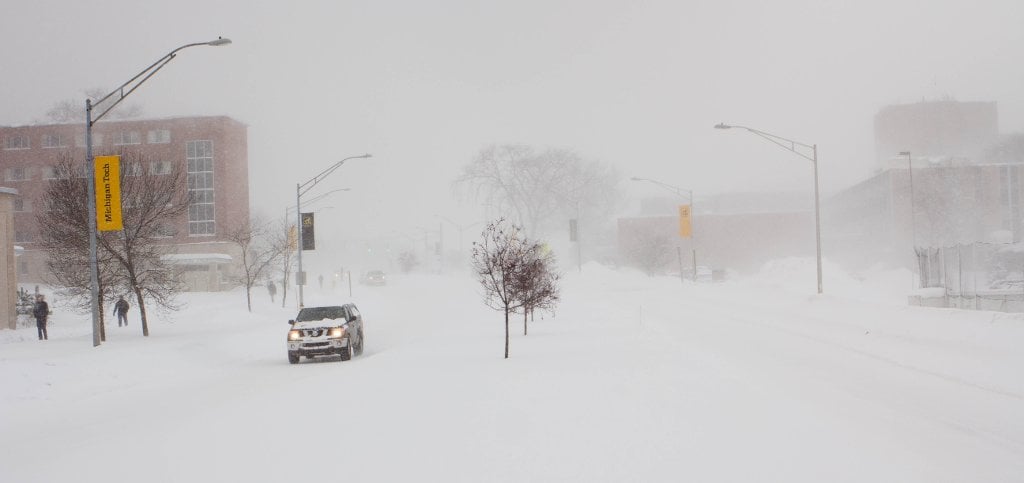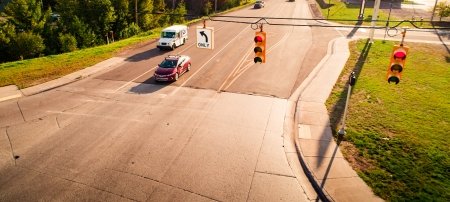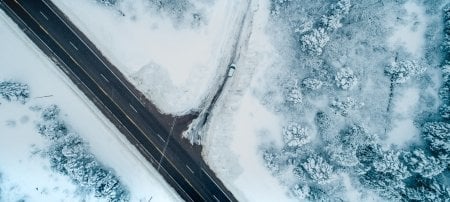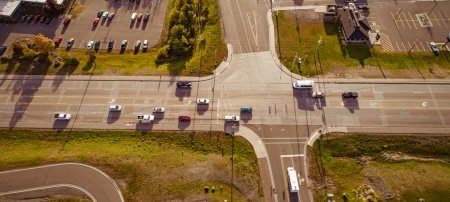Presents are delightful surprises; road conditions should not be. Here's the data you need to travel safely this winter break.
Driving in Keweenaw winters is not for the faint of heart or rear-wheel drive. And while many of us at Michigan Technological University preach our ice-handling prowess and laugh about a proper Upper Peninsula left turn, driving up here is no joke.

How to Turn Left in the UP
Our community likes data. So, we're offering you the resources to plan and judge the best route and timing for your winter break journeys. First step, put your phone away. Second step, check out the roads.
Pretty much every state monitors road conditions—certainly the snowy ones like Michigan and our neighbors Wisconsin and Minnesota. There's even an app for that. And webcams. They’re on campus, they’re on the Mackinac Bridge, they’re even on the front of south Michigan snowplows.
An Engineer's Advice
If you don't believe us, take an engineer's word for it.
"The worst part of any trip is the unknown—not knowing what weather, road conditions or traffic is ahead," says Tim Colling, a civil engineer and the director of the Center for Technology and Training (CTT) at Michigan Tech. “Usually when people get in trouble traveling it is because of unanticipated conditions.”
Not only does Colling work on road infrastructure for a living, but he also travels a lot while offering CTT workshops and seminars. He's learned a few tricks—like a north wind with lake effect snow means the longer US Highway 2 route across the UP is usually better than skirting Lake Superior on M28. Colling frequently checks (when not driving) weather radar maps, Mi Drive’s web cameras and the Mackinac Bridge Authority page, which all help him decide whether or not it's worth being on the road. Being able to see road surface condition and apparent visibility on cameras, combined with looking for lake effect bands on weather radar all help determine which route to take, if it is best to postpone leaving, or to cancel a trip altogether.
During extreme conditions, like what we are getting this finals week, it is also important to check the status of the Mackinac Bridge. There is no use making the trip downstate if the bridge is closed.
For all his own travel, Colling also knows what it's like to be waiting for the kids to come home.
"As a parent it is tempting to text or call your children constantly for progress updates to make yourself feel better," he says. "With some parents, it is literally the reverse of the 'are we there yet, are we there yet' question that young kids ask constantly on long trips."
Don't Keep Calling
But a stream of messages and voicemails add to the stress of driving, and pulling off the road to take a call isn't always safe. Colling suggests working out check-in points ahead of time when you stop for food or gas.
It comes down to setting aside enough time, says Tracie Leix, who works for the Michigan Department of Transportation (MDOT). As a Michigan Tech alumna with family in Chassell, she knows the trip to and from downstate well.
"I think for the average driver, the most important number to remember is 900; that is approximately how many people die on Michigan's roadways each year, regardless of the season, and it increases each year," Leix says, adding that human behavior accounts for nine out of 10 crashes. "Every person that leaves their house in the morning wants to come home at night. Their family wants them to come home at night."
To do that, Leix says, know the roads you're traveling on: hard-packed freeways, especially icy patches below bridges or underpasses, are different than rural two-lane roads where drivers often cut corners. She adds that sliding through lights frequently causes crashes.
Checking It Twice
"Taking a second look to check for drivers coming up on the intersection too fast before entering can help avoid a crash," she says.
Seems obvious, but with finals done and the holidays waiting and our fantastic technology, it can be hard to remember that winter travel is always weather dependent.
"I will leave early or not go at all if that's what it takes to arrive safe," Leix says. "That's not always an option, though, and I understand that. So, slow and steady may be what it takes."
Good thing getting home is not a race. Safe travels this winter break, and ask Santa for snow tires if you don't already have them.
Michigan Technological University is a public research university founded in 1885 in Houghton, Michigan, and is home to nearly 7,500 students from more than 60 countries around the world. Consistently ranked among the best universities in the country for return on investment, Michigan’s flagship technological university offers more than 120 undergraduate and graduate degree programs in science and technology, engineering, computing, forestry, business, health professions, humanities, mathematics, social sciences, and the arts. The rural campus is situated just miles from Lake Superior in Michigan's Upper Peninsula, offering year-round opportunities for outdoor adventure.






Comments